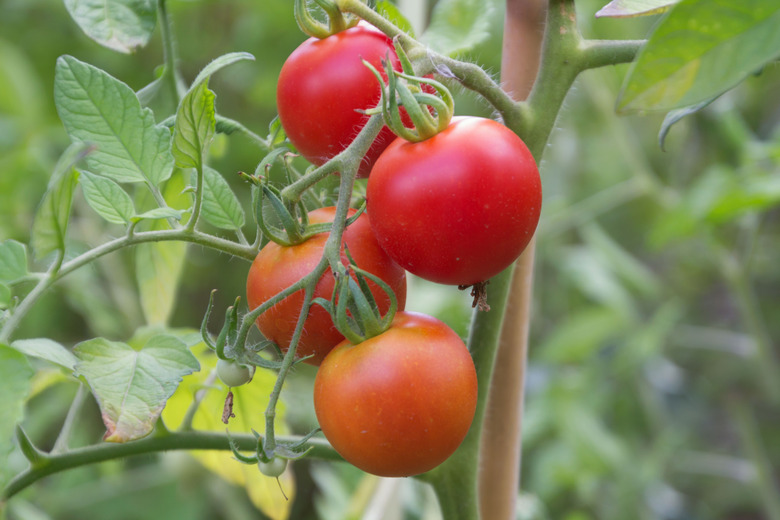Homemade Fungicide For Tomatoes
We may receive a commission on purchases made from links.
Tomato plants (Lycopersicon esculentum, USDA zones 10-11) are easy to grow provided that you use the right homemade fungicide to keep them healthy. There's nothing better than grabbing a ripe one from the vine and serving it in your kitchen.
These versatile fruits come in different varieties, and some are best in salads, while others do well in ketchups and sauces. You do need to be vigilant about using fungicides, though, as tomato plants are susceptible to different ailments, like soil-borne fungal diseases.
Common Tomato Fungal Diseases
Common Tomato Fungal Diseases
The five best-known tomato fungal diseases are anthracnose fruit rot, buckeye rot, early blight, late blight and septoria leaf spot. Each has recognizable symptoms that can be easily distinguished. Anthracnose affects ripe tomatoes and presents with circular, depressed, water-soaked spots that can turn black. Buckeye, on the other hand, attacks green tomatoes that sit atop the soil with brownish-black lesions that almost look targetlike.
Early blight can appear on tomato fruit and foliage. It starts as circular brown or black spots on the older leaves and develops into targetlike spots. Late blight starts with grayish greasy patches and white fuzz on the stems and leaves and dark, sunken lesions on green tomatoes.
Septoria leaf spot only affects tomato stems and leaves with 1/8-inch spots with light centers and dark-brown edges. In time, the leaves and stems will turn yellow and die. This fungus can spread quickly and defoliate tomato plants for entire seasons.
Will Homemade Fungicides Help?
Will Homemade Fungicides Help?
Fungicides may help with some but not all of these diseases. Some gardeners use a mixture of 1 teaspoon of baking soda added to a quart of warm water with a drop of liquid dish soap. This can be poured into a spray bottle, shaken well and sprayed onto the entire plant. This should be done out of direct sunlight; otherwise, the plants can get damaged. It's important to note, however, that baking soda does not kill fungal pathogens once they're present; it works as a preventive by making tomato plant surfaces alkaline, which creates an inhospitable environment for fungal pathogens to breed and grow.
Another anecdotal method is to make compost tea. Mix 1 part aged (four months or more) compost into 5 to 8 parts water in a covered container. This should be left in a room or outside where the temperature stays at 60 to 70 degrees Fahrenheit. Stir daily and let it steep for five days.
Pour the compost tea through a strainer and into a spray bottle. Spray the plants well but make sure not to spray them if you are going to harvest the fruit within the next two to three weeks. Compost tea applied to the soil may work better to build healthy plants that can better withstand disease instead of using the mixture to try and prevent or control disease.
Store-Bought Tomato Fungicides
Store-Bought Tomato Fungicides
Organic fungicides that contain copper and Bacillus subtilis can help prevent some tomato plant diseases. Fungicides can irritate the skin, eyes and throat, but their toxicity to humans is considered to be low. Whether you choose a homemade or store-bought fungicide is a matter of choice. Some store-bought versions are multipurpose and can be used on vegetable plants, flowers, roses, shrubs, lawns and other fruit plants.
Many store-bought fungicides come in concentrated forms, so you will need to add water before application. Be sure to read and follow the package directions carefully. With all fungicides, apply at the first signs of disease for best results.
